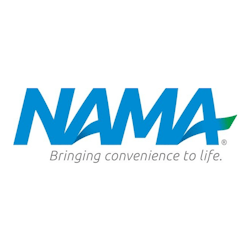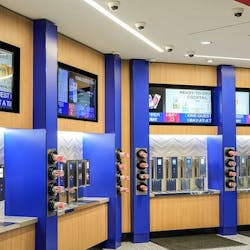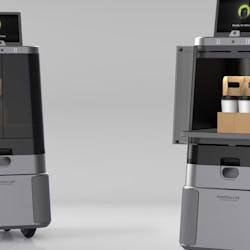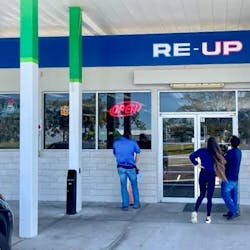Technology is changing many aspects of the refreshment services business, and attendees at the National Automatic Merchandising Association (NAMA) CoffeeTea&Water Show in Las Vegas received an overview of how technology can improve their business during a roundtable.
Prof. Michael Kasavana, the NAMA endowed professor at Michigan State University, moderated the panel discussion.
Cliff Fisher, sales manager of vending management solutions at MEI, explained the benefits of electronic commerce to coffee service operators. In coffee service, “e-commerce” refers to giving customers the ability to order products from the service provider’s Website.
Fisher said e-commerce allows an operator to offer more products to customers. In many cases, customer are not fully aware of everything the coffee service offers.
Another advantage is that online orders are more profitable for merchants since there is less labor involved in processing the order.
Fisher said 30 percent of an OCS operator’s customers in one year can be moved from calling in orders to using e-commerce.
In addition to being more efficient, e-commerce often results in larger orders, Fisher said. He said on average, customer orders increase by 34 percent one year after the customer moves to online ordering.
Another advantage of e-commerce is that it reduces the company’s use of fuel. Hence, operators can tout e-commerce as part of their “green” initiative. He said every 100 pounds removed from a delivery truck results in 1 to 2 percent improved fuel economy. “It’s not a ‘rolling warehouse,’” Fisher said. He noted that operators can replace larger delivery vehicles with smaller ones.
Rob Masri, CEO of Cardagin Networks Inc., discussed the emerging opportunity of mobile marketing and loyalty rewards. He said consumers are using their mobile phones for retail purchases, giving retailers new ways to manage loyalty rewards programs.
“It’s important to figure out how to retain customers,” Masri said, noting the appeal that reward programs bring to retailers.
To date, Masri said the financial services industry and the airline industry have been most successful with loyalty reward offers.
One benefit reward programs give retailers is higher sales. He said a 5 percent increase in sales to regular customers can improve revenue by as much as 25 percent.
“Isn’t it important for the local coffee shop to do the same thing?” Masri asked.
He noted that his company allows consumers to track loyalty points, redeem rewards and receive discounts from participating merchants.
Merchants, for their part, can advertise offers to consumers in real time. Merchants can also track customers’ buying activity. “It allows businesses to begin to create data bases,” Masri said.
Brian Voigt, vice president of strategic accounts for Bank of America Merchant Services (BAMS), reviewed the benefits of cashless commerce to refreshment service operators.
Voigt said allowing coffee service customers to pay for orders over the phone with payment cards eliminates the 30-wait required when billing customers directly. He noted that his company, one of the nation’s largest credit and debit processors, offers a special rate for NAMA members.
Voigt noted that American Express is the dominant credit card provider for coffee service orders.
Voigt summarized the key trends taking place in cashless commerce today:
- Multiple function cards that give the user access to multiple accounts with one card.
- Contactless cards that enable consumers to make purchases by waving the card over a reader as opposed to swiping the card.
- Mobile payments through smart phones.
“Mobile commerce is a place where e-commerce and retail finally come together,” Voigt said. “This brings other companies and consumers to you.”
Voigt also updated his listeners about the Durbin amendment, which impacts vending more than coffee service. He noted that he is hopeful that bank card networks will announce action protect the interests of small ticket merchants, which include vending operators, in response to concern over the Durbin amendment.
Vending operators and other small ticket merchants have expressed concern over the interchange fee caps announced in response to the Durbin amendment. Banks and credit card associations have announced higher caps for small ticket transactions.
Voigt said the newly announced interchange fees make debit card purchases under $10.50 more expensive than existing previous interchange fees. He said the Durbin amendment affects debit cards and not credit cards, but noted that most cashless vending purchases are made with debit cards.
Voigt said his company, one of the nation’s largest processors of cashless transactions, has been working with NAMA to relay the concerns of vending operators to the banks and card associations. He said he expects positive news for small ticket merchants in the near future. “The outlook is very positive,” he said.







